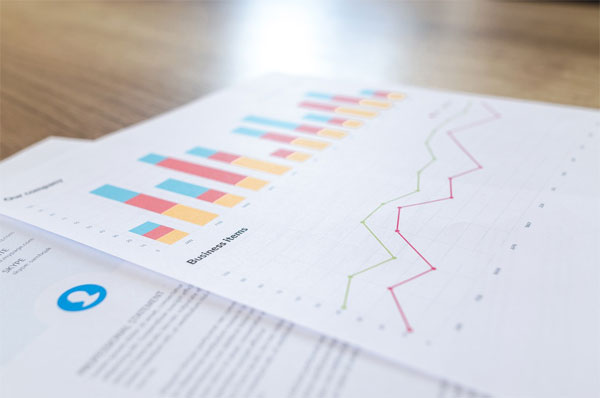Student Analysis: The Role of Statistics in the Banking System
In the fast-changing banking business, it's important to make decisions based on facts. The combination of financial data and statistical analysis has helped banks improve their processes, risk management, and customer experience. In this in-depth guide, we look at the important role statistics play in the banking system, focusing on its many uses and the huge benefits it brings to this field.
Statistics are a great way to figure out how complicated the banking system is and how to run it. Using statistical methods, financial institutions can get useful information from huge amounts of data. This lets them make decisions that are good for growth and security.

Studying statistics is undoubtedly an intriguing journey, offering insights into the world of data interpretation and analysis. However, many students find themselves echoing a common sentiment - that statistics assignments are among the most formidable challenges they face in college. The intricacies of statistical concepts and the complexities of data manipulation can indeed be overwhelming. Nevertheless, there's a beacon of hope for students grappling with statistics tasks: AssignmentBro. This resource has solidified its reputation by showcasing that conquering a statistics assignment can be not only manageable but also enjoyable. With AssignmentBro's statistics assignment help students can navigate through these challenges with newfound confidence and understanding, transforming what once seemed daunting into a fulfilling learning experience.
A detailed look at exploring statistics in banking
To understand how important numbers are in the banking system, you need to look at the many ways they are used. Let's look at the different places where numbers are very important:
1. Taking into account and managing risks
Statistical models are a key part of figuring out and dealing with risks in the banking industry. By looking at past data, banks can find patterns and trends, predict possible risks, and come up with good plans to deal with them. This helps protect both the organization and its users' financial security.
2. Analysis of how customers act
By using statistics methods, banks can learn more about how customers act in general. This includes looking at past transactions, buying habits, and desires for interaction. This kind of research helps banks personalize their services, improve their customers' experiences, and make more effective marketing efforts.
3. How to find and stop fraud
Banks use statistics as the basis for their tools to catch scams. These systems rely on algorithms that use information about past transactions to look for odd trends that could be signs of scam. Rapidly finding and stopping theft protects the bank and builds customer trust.
4. Scoring credit and giving loans
Statistics play a big role in figuring out who is creditworthy and who can get a loan. Banks can figure out how risky it is to give money to a person or business by looking at their credit past, pay information, and other relevant factors. This lets them make good decisions about who to lend money to.
5. Analysis of the market and investment plans
Banks rely heavily on data analysis to make smart choices about where to spend. By looking at market trends, economic signs, and past success, financial companies can come up with good business plans that bring in the most money and have the least amount of risk.
6. Making a financial forecast
For efficient resource sharing and planning, it is important to make accurate financial forecasts. Statistical methods let banks predict future financial trends, plan for possible changes in the market, and make the best use of their resources.
7. Making operations run more smoothly
Statistics are a key part of making banking institutions run more efficiently. By looking at process data and finding bottlenecks, banks can make their operations more efficient, cut costs, and improve service delivery overall.
FAQs
How does statistical analysis help banks keep track of risks?
A: Statistical analysis lets banks find patterns and trends in past data, which helps them predict possible risks and come up with good ways to deal with them.
How do banks use data to figure out how their customers act?
A: Statistics help banks look at past transactions and how customers spend their money. This gives banks information about how customers act, which can be used to make personalized services and marketing efforts.
How do statistical models help with credit scores and approving loans?
A: Statistical models look at a person's credit history, pay data, and other relevant factors to figure out if they are creditworthy. This helps loan acceptance choices be well-informed.
How does statistical analysis help banks make decisions about investments?
A: Statistical study of market trends and past success helps banks come up with investment plans that bring in the most money and have the least amount of risk.
How do banks use statistics methods to make predictions about money?
A: Statistical methods help banks predict future financial trends, make good use of their resources, and plan for possible changes in the market.
How does statistical analysis improve how well banks do their jobs?
A: Statistical study of process data helps banks find bottlenecks, streamline operations, cut costs, and improve service delivery.
Putting numbers into the banking system has changed the business by letting institutions make choices based on facts that lead to growth, improve the customer experience, and handle threats well. Statistical analysis has become an important tool for banks to use for everything from figuring out how risky something is to making their operations run more smoothly.
In the end, numbers give banks the tools they need to deal with uncertainty with trust, which helps them stay successful in a complex and competitive world.
Date: 07.08.2023
Get your content published on BanksDAILY.com in just a few clicks.